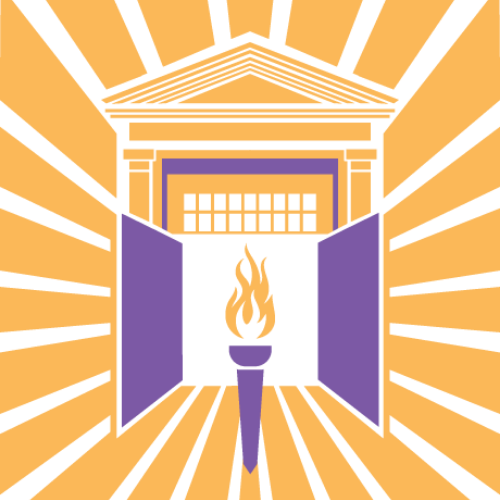The Calfee Training School Fire
Written by Megan Zalecki
This post was originally published to our social media platforms on Nov. 17, 2023.
When the Calfee Training School was destroyed by a fire in November 1938, the cause was never officially identified. Chauncey Harmon, the principal of Calfee, and fellow teacher Willis Gravely, discovered the building in flames as they were departing from a party celebrating Armistice Day and the first break of the school year. They immediately called the fire department and tried to save what records and books they could salvage from the first floor.
The Southwest Times reported that the fire was discovered by patrolmen around 1:15am. They described the flames as over 100 feet above the two-story structure and praised the fire department for their response. Despite the proximity of the fire department to the school, mere blocks away, the damages were extensive and the building would not be saved.
No doubt due to impacts of the racist Supreme Court ruling in Plessy v. Ferguson of “separate but equal,” the African American school was in dilapidated condition, and plans were evidently being considered for a new building. Chauncey Harmon described the dire conditions, along with previous lack of school board support in trying to address them, in his appeal to the community in the days following the fire: the toilets had to be flushed using buckets of water. The radiators leaked so much that buckets and mops were stationed close by. There were holes in the floor, no room on the grounds for recreation, and the classrooms were overcrowded. One room in the school served as a classroom, a library, an office, and the lunchroom. They were forced to hold classes and serve lunches, along with housing the school library and office, from one room. Despite these limitations, students recall their Calfee teachers as professionals who worked hard and cared for their students. As Mr. Harmon stated at the school board meeting, “we did it and we did it neatly, but it was one of the most serious handicaps I have ever tried to work under.”
The weeks following the fire proved to be tense as Harmon worked tirelessly to identify alternative locations to resume education for Black students in the face of inaction and disinterest from the school board. Despite this, classes for Calfee students resumed and were held in First Baptist Church and New Century Methodist Church, while high school classes were held on the second floor of Odd Fellow’s Hall.
Along with vocal support from Dr. Percy Corbin and others in the community, Harmon pushed the school board for equalized facilities in the new building to better serve their growing numbers of students, fighting for more classrooms to allow space and provision for manual arts and science classes, a gymnasium, and assembly hall, all things that white students had. Additionally, in 1938, Harmon and Gravely had agreed to sign on as plaintiffs in petitions filed the NAACP for equalized salaries for African-American teachers.
Ultimately, the school board ignored Harmon’s demands and decided, without community input, to stick with a plan for an eight-room building, the structure we see today. The board also decided to remove the high school teacher positions filled by Harmon and Gravely. Black high school students in Pulaski would be bused miles daily to Christiansburg Industrial Institute.

